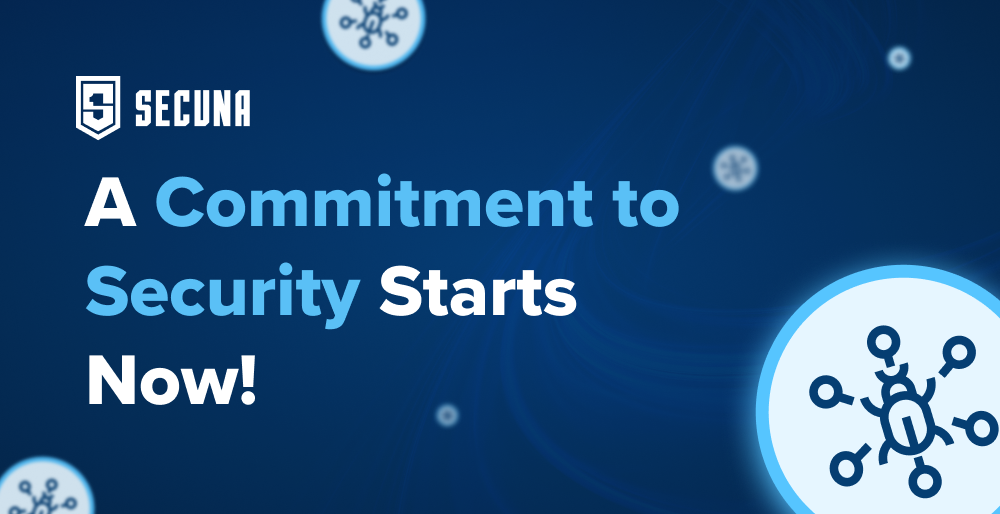Why Cybersecurity is Essential for Every Business
Just as trust strengthens relationships, robust security is essential for a thriving business. With cyber threats continuously advancing, companies of all sizes must stay vigilant to protect their assets. A single cyberattack can lead to financial losses, reputational damage, and even legal consequences. That’s why understanding the basics of cybersecurity is crucial for protecting your business, your clients, and your future.
Check out the Cybersecurity & Infrastructure Security Agency (CISA) website for an overview of the current cyber threat landscape.
Common Cyber Threats That Put Businesses at Risk
As businesses become more reliant on digital systems, cybercriminals are constantly evolving their tactics to exploit vulnerabilities. Whether targeting small startups or large enterprises, hackers use a variety of sophisticated and deceptive techniques to compromise business security.
Understanding these common cyber threats is the first step in defending against them. Here are some of the most dangerous threats businesses face today:
Phishing Attacks

Phishing is a deceptive tactic where attackers impersonate legitimate organizations through emails, messages, or websites to trick employees into revealing confidential information. These attacks often use urgency and fear to manipulate victims.
Ransomware Attacks

This type of malware encrypts an organization’s files, rendering them inaccessible until a ransom is paid. Ransomware can cripple business operations, cause severe financial loss, and even lead to permanent data loss if backups are unavailable.
Insider Threats

These threats originate from within the organization—whether from employees, contractors, or business partners—who may accidentally or intentionally compromise security. Insider threats can result from negligence, lack of cybersecurity awareness, or malicious intent.
Cybersecurity Mistakes Businesses Must Avoid
Even well-meaning businesses can fall into cybersecurity traps that leave them vulnerable to attacks. Cybercriminals are constantly evolving their tactics and small missteps—whether due to oversight, lack of awareness, or resource constraints—can lead to devastating breaches, financial losses, and reputational damage. To build a resilient security posture, businesses must be proactive in addressing common pitfalls. Here are some of the most frequent and costly cybersecurity mistakes to avoid:
- Ignoring Software Updates and Patches: Every software update comes with security fixes designed to close vulnerabilities that hackers can exploit. Businesses that delay or ignore these updates are essentially leaving their digital doors unlocked, inviting cybercriminals to exploit known weaknesses. Ransomware attacks, data breaches, and system takeovers often stem from outdated software.
- Using Weak or Reused Passwords: Weak passwords remain one of the easiest ways for hackers to gain unauthorized access. Many cyberattacks exploit stolen or guessed credentials, often obtained through past data breaches. Reusing passwords across multiple accounts further amplifies this risk.
- No Multi-Factor Authentication (MFA): A single password is no longer enough to protect sensitive data. Without MFA, a compromised password can give attackers full access to business systems, customer data, and financial records. Multi-factor authentication adds an extra layer of security by requiring a second form of verification, such as a fingerprint scan, a one-time passcode, or a security key.
- Lack of Cybersecurity Training for Employees: Employees are the first—and often the last—line of defense against cyber threats. However, without proper training, they can inadvertently become an organization's weakest link. Phishing emails, social engineering tactics, and malicious links are common entry points for cyberattacks.
- No Incident Response Plan: Cyberattacks are no longer a question of if but when. Without a well-defined incident response plan, even a minor security breach can escalate into a full-scale crisis. A lack of preparation can lead to delayed responses, increased data loss, prolonged system downtime, and regulatory penalties. Businesses should establish a structured response strategy that includes threat identification, containment, mitigation, and recovery protocols.
- Not Investing in Proactive Cybersecurity: Many businesses take a reactive approach to cybersecurity, only addressing threats after an attack has occurred. This can lead to significant financial and operational damage. Proactive security measures—such as continuous monitoring, penetration testing, threat intelligence, and security automation—help businesses identify and mitigate risks before they become full-blown attacks.
First Steps to Strengthen Your Business Security
Taking proactive steps toward cybersecurity can make a significant difference. While no system is 100% immune to attacks, implementing strong cybersecurity measures early on can significantly reduce risks. By prioritizing security from the start, businesses can build a resilient foundation that protects sensitive data, customers, and long-term success. Here are the key first steps every business should take to strengthen its cybersecurity posture:
- Back-Up Important Data Regularly: Regularly back up critical data to ensure that you can quickly recover in the event of an attack or system failure. Use a combination of cloud-based and offline backups, follow the 3-2-1 backup rule (three copies of data, two on different storage media, one offsite), and test backups frequently to verify their integrity.
- Enforce Strong Password Policies: Require employees to use strong, unique passwords for each account and encourage the use of password managers to store and generate complex credentials. Implementing password policies, such as mandatory password rotation and length requirements, further strengthens account security.
- Implement Multi-Factor Authentication (MFA): MFA adds an essential extra layer of protection by requiring a second form of verification, such as a one-time code, biometric authentication, or a security key. This reduces the likelihood of unauthorized access, even if passwords are compromised.
- Educate Employees on Cybersecurity Best Practices: Regular cybersecurity training ensures employees can recognize threats, follow best practices, and respond appropriately to suspicious activity. Implementing security awareness programs, phishing simulations, and clear security policies can greatly reduce the risk of insider-related breaches.
- Limit Access to Sensitive Data: Not every employee needs access to all business data. Implementing role-based access controls (RBAC) ensures that employees only have access to the information necessary for their roles. Regularly review access permissions and revoke credentials for former employees to minimize insider threats.
- Develop an Incident Response Plan: Having an incident response plan ensures that your team knows how to react quickly and effectively in the event of a breach. A well-defined plan should outline roles, communication protocols, containment strategies, and recovery procedures. Conducting regular incident response drills prepares employees to act decisively when security incidents occur.
- Work with Security Professionals to Identify Vulnerabilities: Conducting vulnerability assessments, penetration testing, and security audits can help detect weaknesses before attackers exploit them. Partnering with cybersecurity experts ensures that risks are identified and mitigated before they escalate. At Secuna, we specialize in helping businesses enhance their security posture through proactive security testing and expert guidance. Identifying vulnerabilities early can mean the difference between staying secure and suffering a costly breach.

Secure Your Business Before It’s Too Late
Cybersecurity isn’t just an IT concern—it’s a critical business priority that affects every aspect of your organization, from operations to reputation, and ultimately your bottom line. In today’s interconnected world, cyber threats are no longer something that only large corporations need to worry about—small and medium-sized businesses are increasingly targeted as well.
All businesses must keep in mind that cybersecurity isn’t a one-time fix; it’s an ongoing process that requires constant vigilance and adaptation. As cybercriminals become more sophisticated, your security measures must keep pace. Regular audits, updates, and employee education are crucial to staying one step ahead of potential threats.
Evaluate your current security measures, train your employees to recognize potential threats, and partner with cybersecurity professionals to identify and address vulnerabilities before they are exploited. Don’t wait for a breach to prompt change—by acting now, you’ll prevent future headaches and safeguard your business.
If you need expert guidance, Secuna is here to provide proactive, tailored security solutions that fit your unique needs. Contact us at [email protected] today!
Stay tuned for this week’s deep dive into Committing to Cybersecurity! Follow us on Facebook, LinkedIn, Instagram, and X for more insights and updates.

